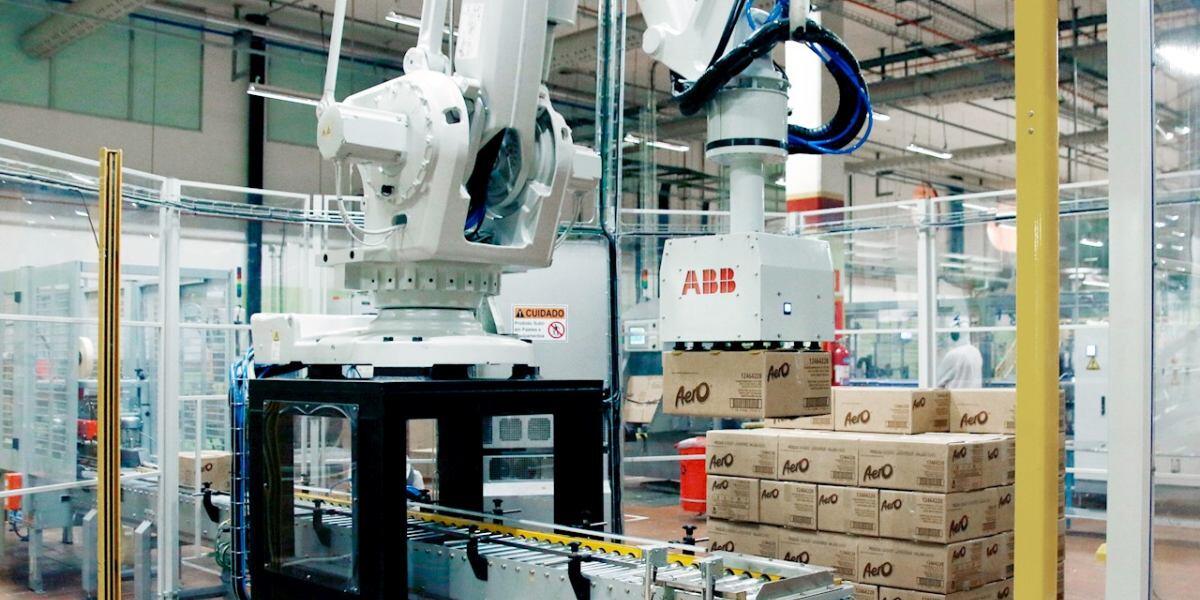According to a recent report by Research and Markets, the palletizing robot market is set to grow significantly, with an expected increase of USD 1.56 billion between 2023 and 2028, representing a compound annual growth rate of 5.72%.
The Robotic Palletizing Systems Market report provides a global analysis, market size and forecasts, trends, growth drivers and challenges, as well as a vendor analysis covering around 25 suppliers.
Key Growth Drivers:
- Automation to Reduce Labour Needs: Industries are increasingly automating material handling to reduce reliance on labour, improve efficiency, and lower costs.
- Advantages Over Conventional Palletizers: Robotic systems offer greater flexibility, precision, and reliability compared to traditional palletizers, making them a preferred choice across various industries.
- Adoption by SMEs: Small and medium-sized enterprises (SMEs) are integrating robotic palletizers to boost productivity and maintain their competitiveness.
Emerging Trends:
- Industrial Internet of Things (IIoT): The integration of IIoT technologies into robotics enhances connectivity and data analysis, enabling smarter and more efficient palletizing solutions.
- Collaborative Robots (Cobots): The growing popularity of cobots in material handling promotes safer and more efficient human-robot collaboration.
- 3D Vision Technology: Advancements in 3D vision improve the precision and adaptability of robotic palletizers, allowing them to handle a wider variety of products and packaging.
Market Segmentation
By industry :
- Food and Beverage
- E-Commerce and Logistics
- Healthcare
- Retail
- Others
By Type :
- Articulated Robots (Industrial Robots)
- Collaborative Robots
Key Suppliers :
- ABB Ltd.
- FANUC Corp.
- KUKA AG
- Yaskawa Electric Corp.
- Universal Robots AS
Strategic Considerations:
- IIoT and 3D Vision Integration: Investing in these technologies can enhance system capabilities and provide a competitive edge.
- Adoption of Cobots: Implementing collaborative robots can increase operational flexibility and safety.
- Market Expansion: Exploring opportunities in emerging markets, particularly in the APAC region, can drive growth.
Study Source : Research and Markets
FAQ on Collaborative Robotics and Robotic Palletizers
1. What is a cobot, and how is it different from a traditional industrial robot?
A cobot, or collaborative robot, is designed to work safely alongside humans without the need for protective barriers. Unlike traditional industrial robots, which typically operate autonomously and are often isolated for safety reasons, cobots are equipped with advanced sensors and detection technologies. These features allow them to work near people and stop safely in case of a collision, preventing injuries.
2. What are the benefits of using robotic palletizers in logistics operations?
Robotic palletizers automate the loading and unloading of products onto pallets, significantly improving the efficiency and accuracy of logistics operations. Benefits include reduced human error, faster processing times, better space utilization with optimized palletizing patterns, fewer risks of injuries from manual handling, and freeing employees from repetitive, low-value tasks. Additionally, the integration of 3D vision technology allows robots to handle a variety of product shapes and sizes, enhancing their versatility.
3. How does 3D vision improve the performance of robotic palletizers?
3D vision enables robotic palletizers to perceive depth and create three-dimensional models of objects and their environment. This capability enhances precision in detecting, locating, and handling products, even those with irregular shapes or improper positioning. It also facilitates adaptability to variations in package sizes and shapes, optimizing the palletizing process and reducing errors.

